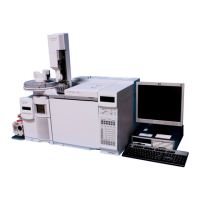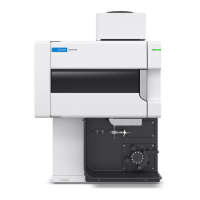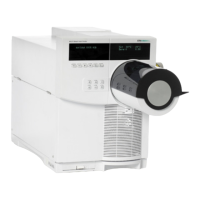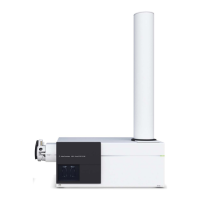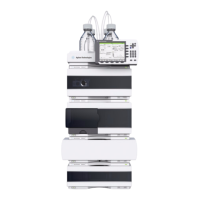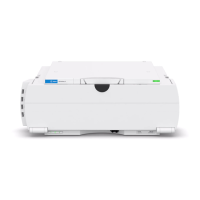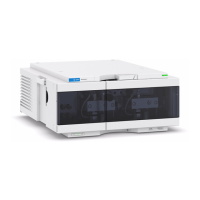54 Agilent Restricted Agilent 5110/5100 ICP-OES Service Manual
3 General Information
Camera assembly
The grating is mounted on an anodized plate that is fixed to the grating and prism casting. The
casting with the grating and prism is then mounted to the top of polychromator casting.
Figure 11. Echelle grating and prism assembly
The angle that the grating is positioned on the grating and prism casting is factory set and is not
adjustable in the field. When the grating and prism assembly is installed in the polychromator,
the grating is positioned at the same angle as the grating blaze.
The ruling of the grating is horizontal in respect to the polychromator focal plane. The grating
then diffracts the refracted light from the prism across the vertical axis of the focal plane.
Camera mirror
Camera mirror (M7) is an off axis parabolic mirror. The geometry of the mirror is used to reduce
spherical aberrations. The mirror is made from aluminum, and coated with MgF
2
to enhance
transmission of ultra violet energy.
The camera mirror focuses dispersed light onto the detector assembly. This mirror is adjustable
to allow the image to be focused and centred on the detector.
Full illumination LED Fiber Optic Source
The polychromator assembly includes a full illumination LED fibre optic source with the fibre
mounted into the top of the polychromator casting between the camera mirror and the camera
assembly.
The fibre optic LED provides a means to illuminate the camera directly with an incident light
source without having to remove the camera assembly from the polychromator casting. When
the LED is turned on an operator can perform simple functional checks on the camera
assembly, camera board and the data handling functions of the instrument.
Camera assembly
The Agilent 5110 ICP-OES instrument camera assembly is an application specific, solid-state
detector, designed for use in the Agilent ICP-OES echelle polychromator. It is a peltier cooled,
charge-coupled device, (CCD), which is made up of 70,908 pixels spread across 70 non- linear
arrays. The size, position and orientation of the arrays ensure full wavelength coverage across
the specified range of 166.798 nm to 784.307 nm.
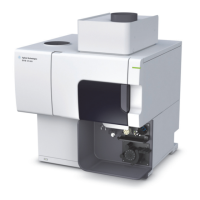
